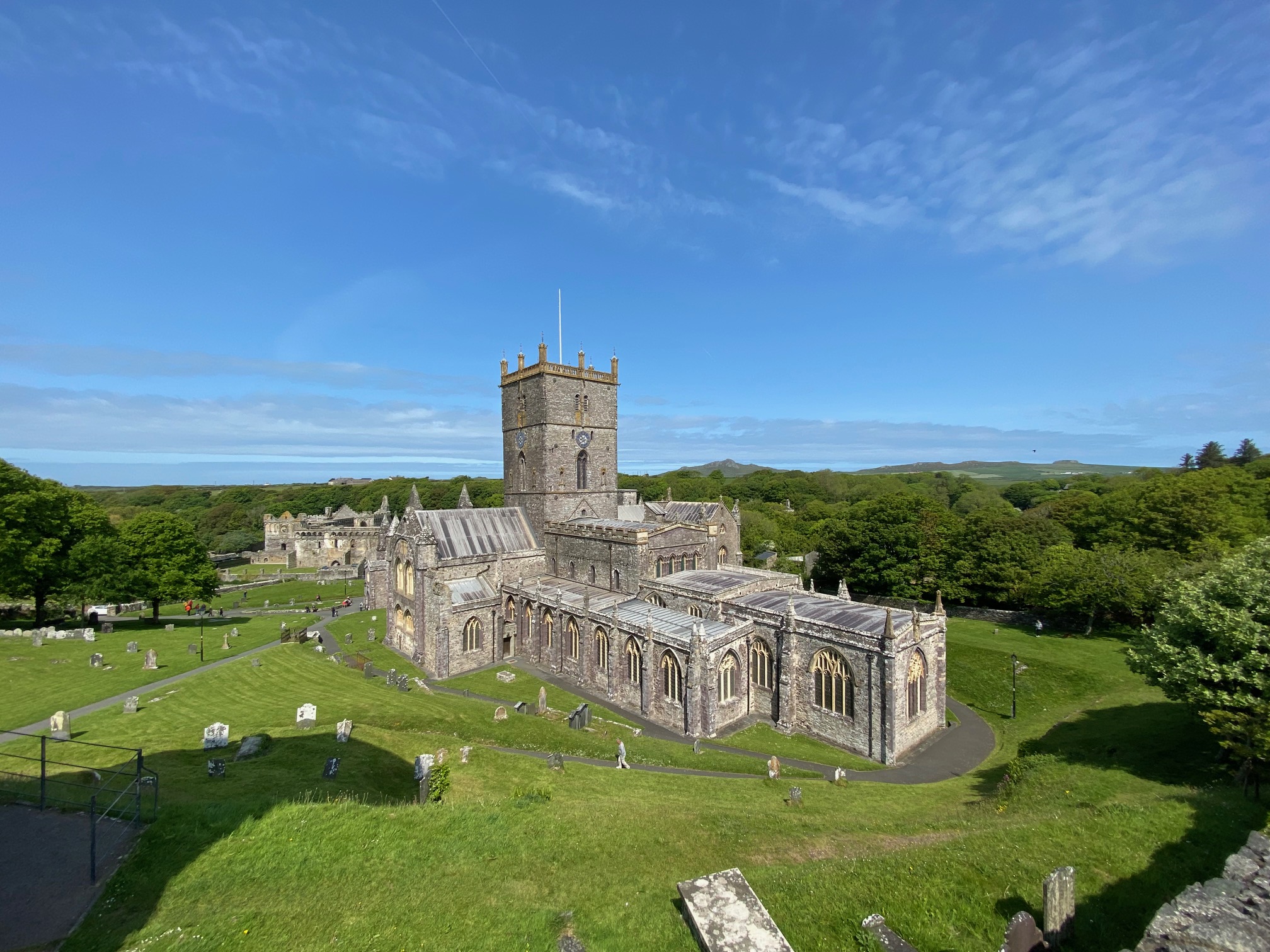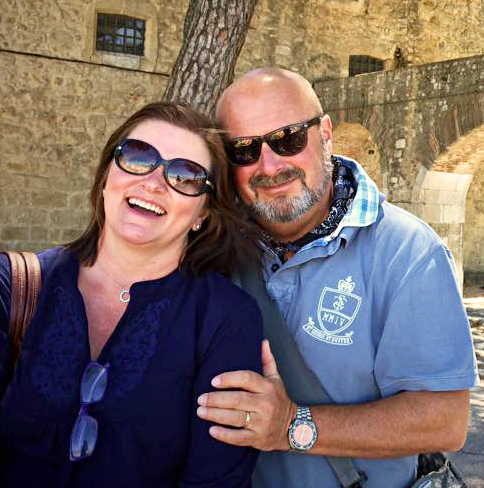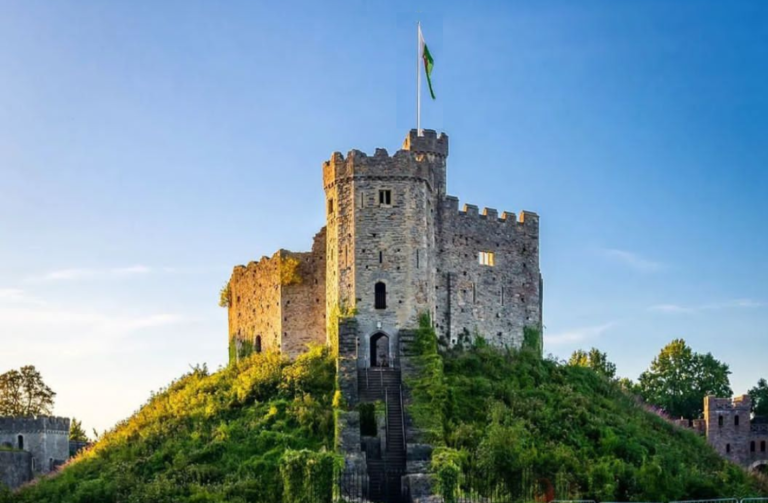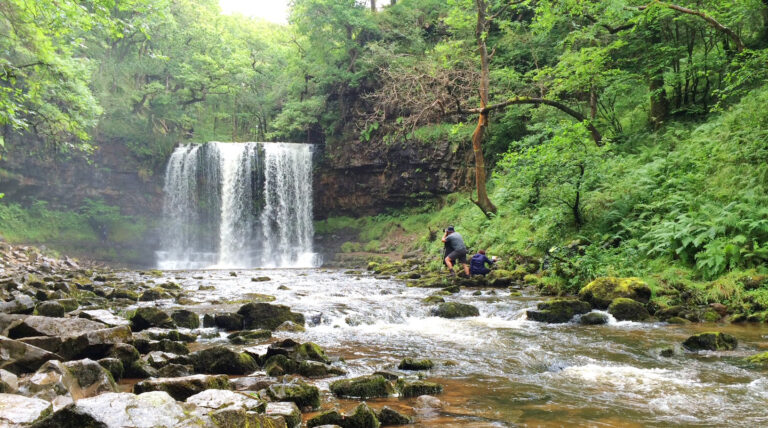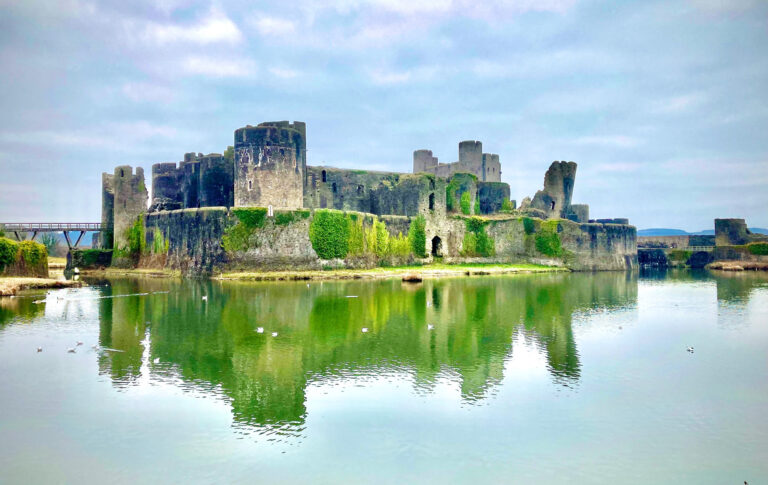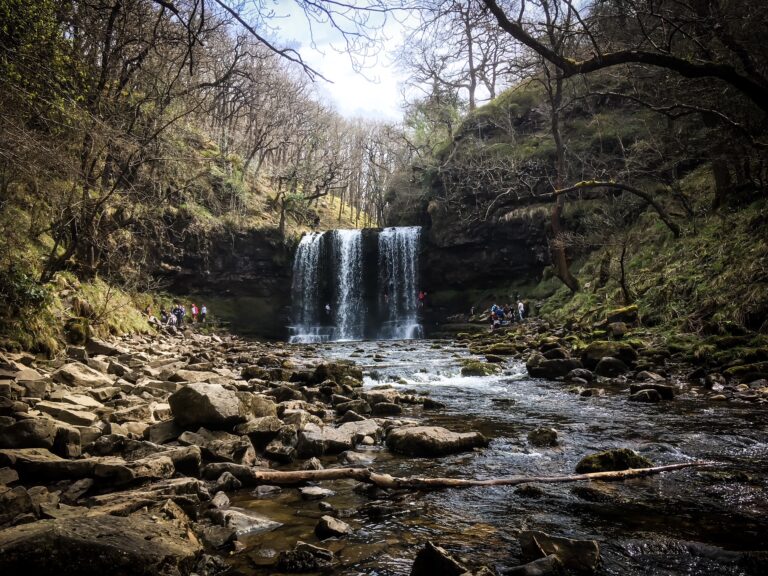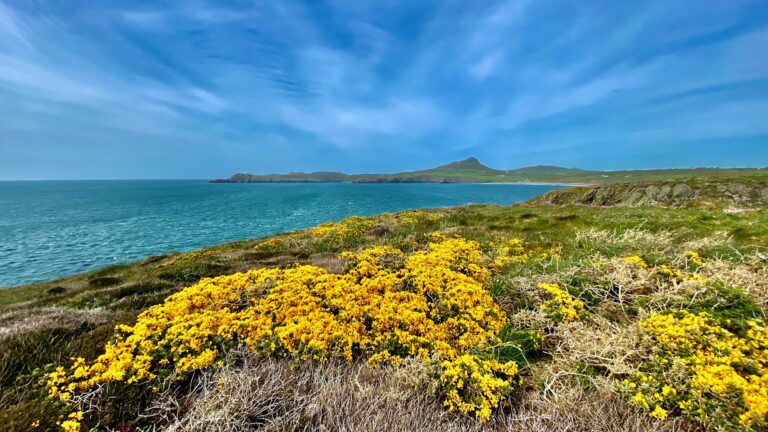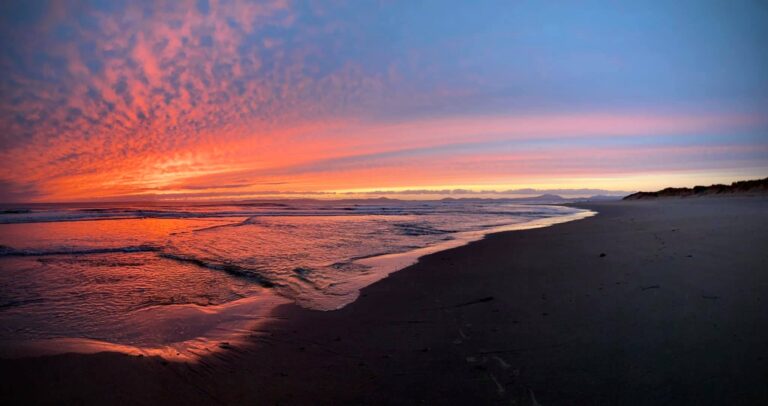Things to do in St Davids: Britain’s Smallest City
Glorious walking on the St Davids peninsular
It was mid-May 2023. We hatched the idea of escaping our four walls at home. There was knee surgery looming. The thought of being stuck at home for weeks recovering ignited a desire to ‘move’. Where to? We didn’t want to travel too far. The weather forecast was mixed, but hopeful. So we focused on Pembrokeshire! Things to do in St Davids.
Previously we had lived in Carmarthenshire. For its proximity, the time we had spent in Pembrokeshire had been pitiful. Deciding to remedy this. We got our motorhome out of storage and headed west.
We returned to a campsite we had visited some fifteen years previously. Previously travelling with a Caravan and a small child. Our small child now Graduating from University, and we have upgraded to a motorhome. No longer having to worry about anyone, but ourselves and the dog.
This website is supported by our readers, so if you buy through links on this site we may earn a small commission at no extra cost to you.
Pencarnan Farm Camping and Caravan Park
With Pencarnan Farm still in business. We booked a couple of nights and put some diesel in ‘Flo’
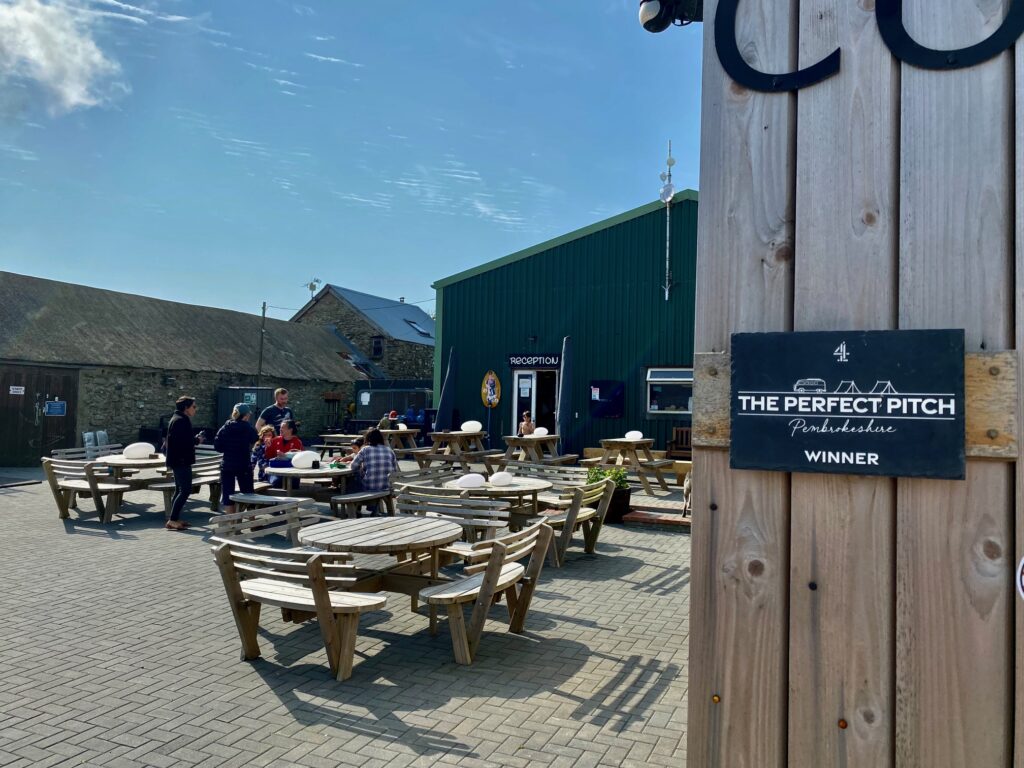
Where we used to pitch our Caravan is now a small but spacious close of Static’s. But, this awarding-winning site has kept all of its original charm (achieved largely by the spacious pitches). It has acquired a bar, pizza restaurant and coffee shop, located around a spacious picnic bench filled courtyard.
Porthselau Beach
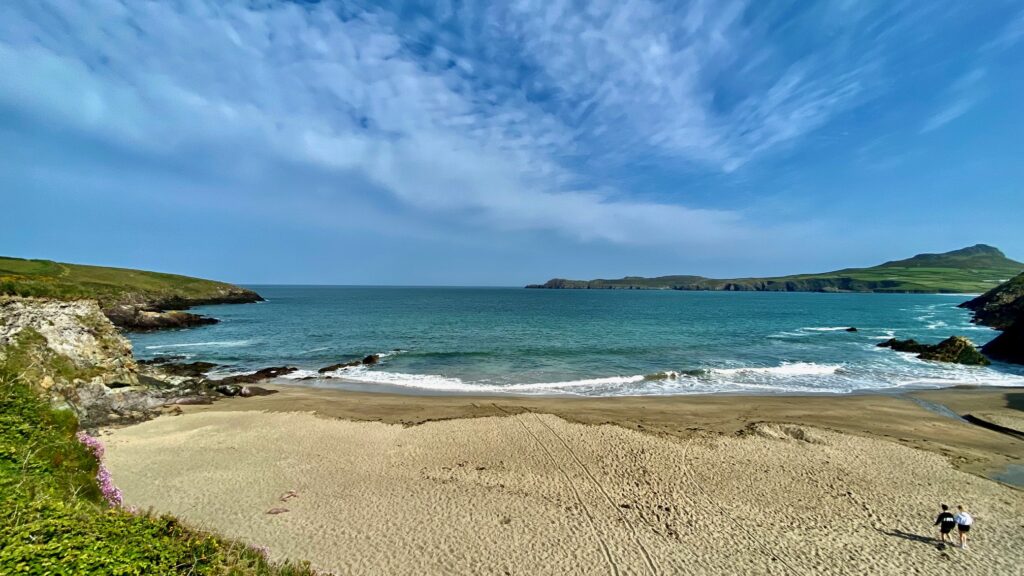
One of the most attractive features of Pencarnan Farm is its beach, Porthselau. A sandy strip when the tide is in. It grows to an interestingly coved area when the tide is all the way out. The Pembrokeshire coastal path crosses the entrance to the beach via a small clapper bridge over a freshwater stream (which is great for hot doggies!)
Whitesands Beach
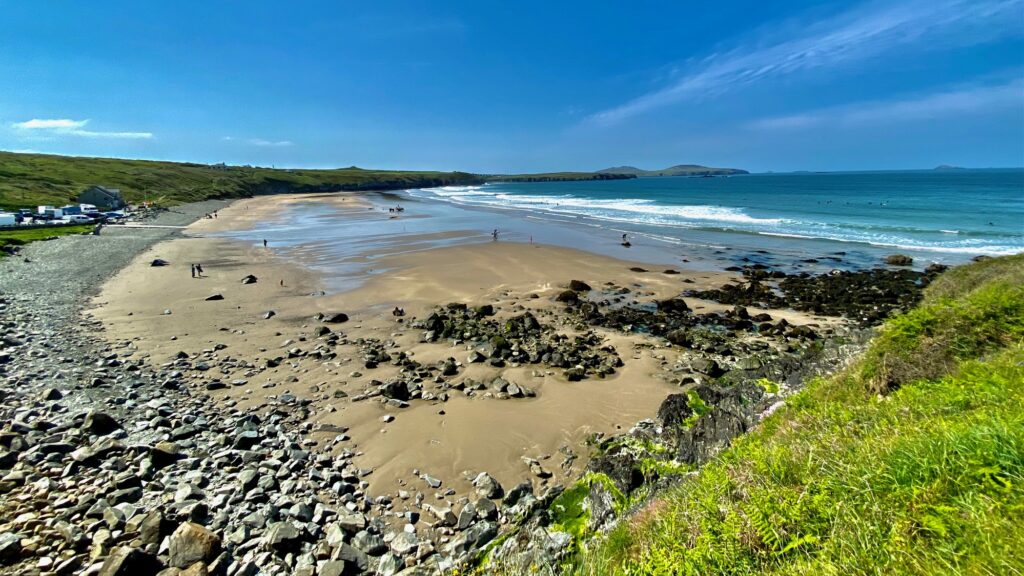
Whitesands Beach is legendary for its surf and is just a five minutes drive from St Davids. It is just a short saunter down the coastal path from Pencarnan Farm, and for those who are more determined, from here St Davids head is a mile away.
There is a real mixture of accommodations in the area, everything from self-catering homes overlooking the sea to St Davids YHA. I would suggest that you book well in advance, to give yourself the most options to choose from.
Don’t visit the ice cream stall in the Car park if you value your waistline. Our dog can recommend the ‘Scoops’ Dog ice cream.
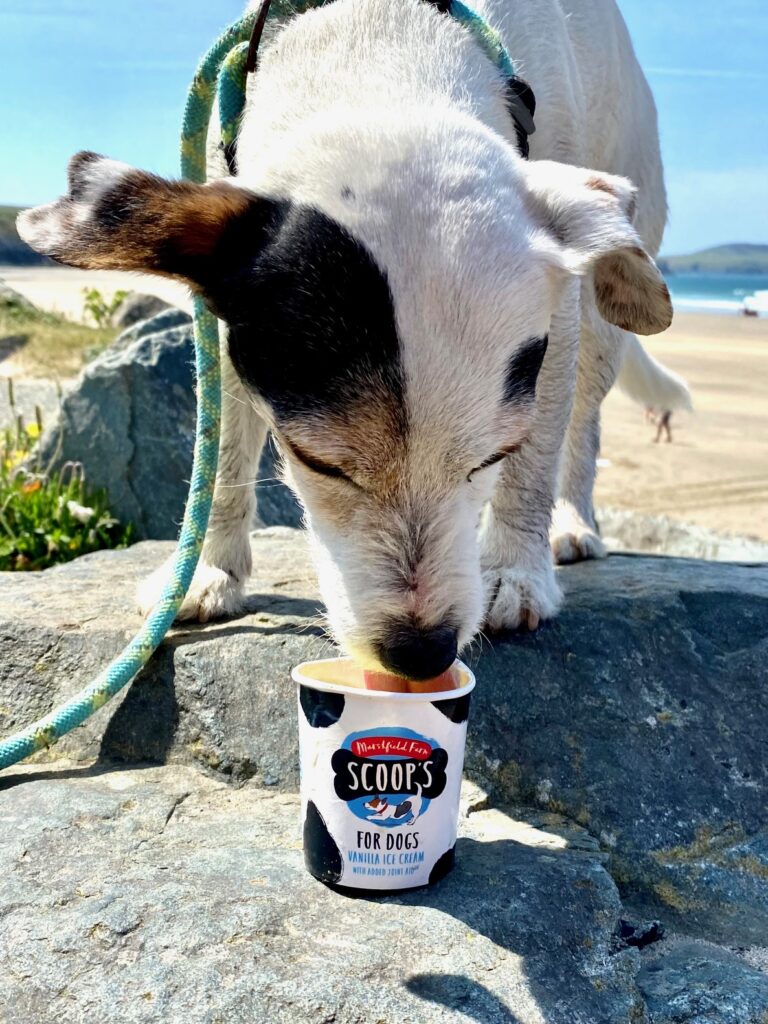
Porthclais Harbour
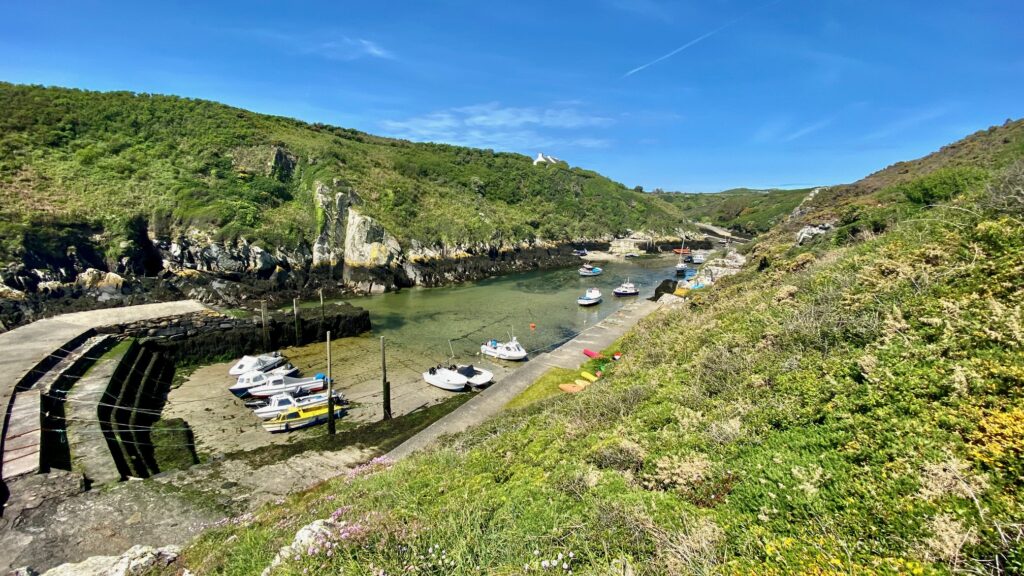
For the second part of our long weekend away we moved location and drove just ten minutes away to the coastline at Porthclais. Less manicured than Pencarnan Farm, but reflected in the nightly cost, Porthclais Farm is also a stone’s throw from the cliffs.
A short walk through a long grass meadow and a gate in the fence will deliver you to Porthclais Harbour. From here you can walk west along the coastal path to Porthlysgi Beach or a short walk East and you will find St Non’s Bay.
St. Non’s Chapel and Holy Well
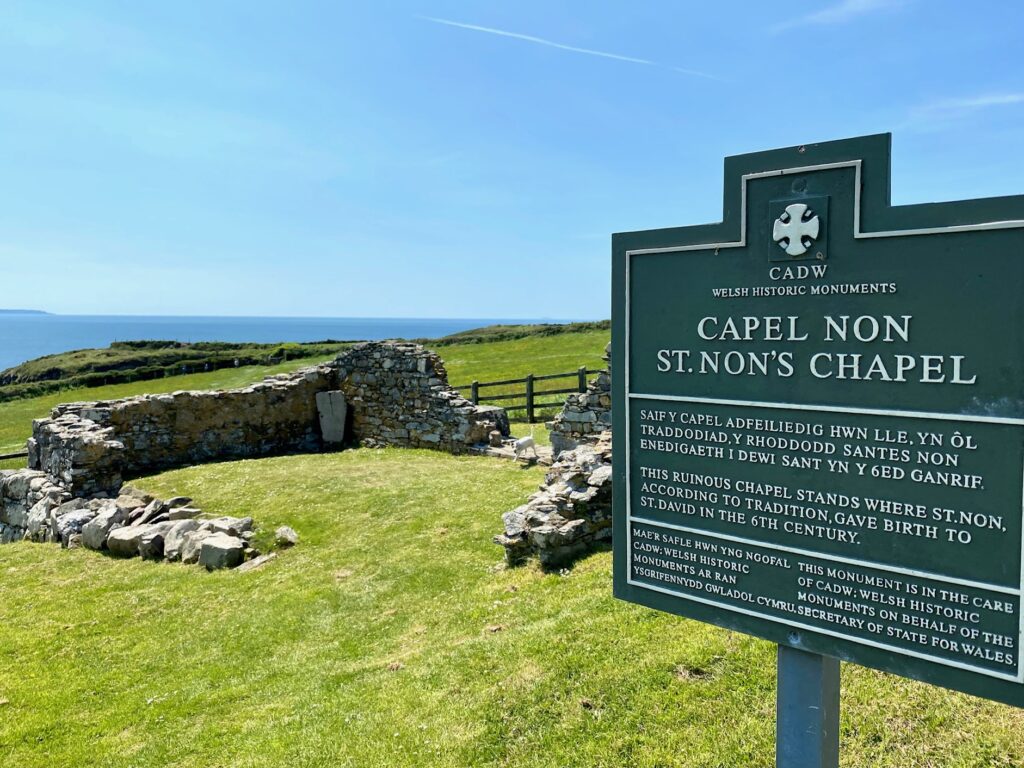
St Non, who gave birth to St David in the 6th Century, is remembered by the remains of a chapel and a holy well. Legend tells us sprang up during a thunderstorm coinciding with his birth.
The ruins of the original Chapel are within a circle of standing stones (found in the surrounding fields) which may suggest the siting of the chapel originally within a pagan stone circle. By 1935 the original stones of the chapel had been reused. Our Lady and St Non now a new nearby Chapel The dimensions of this chapel, believed to echo those of the original.

By continuing your walk you arrive at Caerfai Beach.
Caefai Beach
Caefai Beach, the closest shoreline to St David’s, draws in locals and tourists alike, offering a delightful spot for swimming, rock-pooling, and snorkelling. This south-facing beach provides a fair amount of protection from the elements.
During high tide, Caefai Beach predominantly consists of rugged rocks and sizable boulders. A stretch of sand is revealed as the tied recedes. Surrounding the bay are remarkable yet precarious sandstone cliffs, bearing visible signs of occasional rock falls.
Exploring Caefai Beach presents opportunities to venture into various caves and fascinating rock pools. Exercise caution to avoid being stranded by the advancing tide.
Pembrokeshire Coastal Path
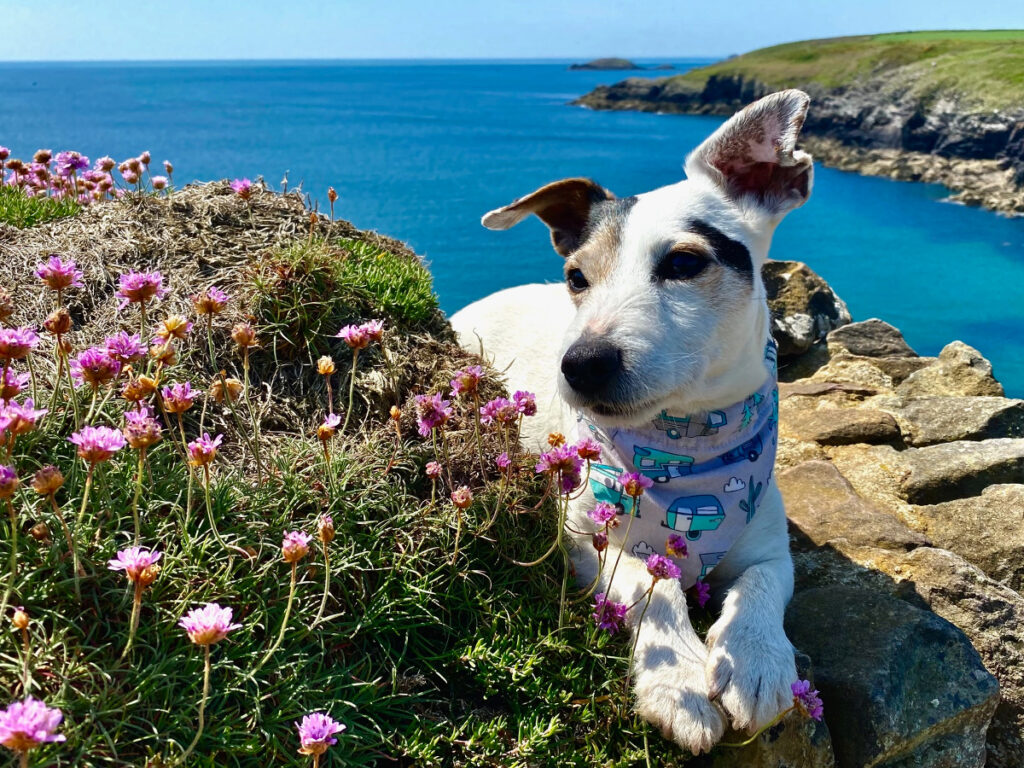
In May, and blessed with fantastic weather, the views from the Coastal Path are stunning. You will meet lots of other excited dogs with slightly anxious owners all wondering if their dog is clever enough to be off their lead without heading over the edge. But the route is mostly wide with the edges of the paths a wonderful mix of coastal plants all blooming in their splendour to try and attract their fair share of pollinating insects, which appeared to be strangely absent.
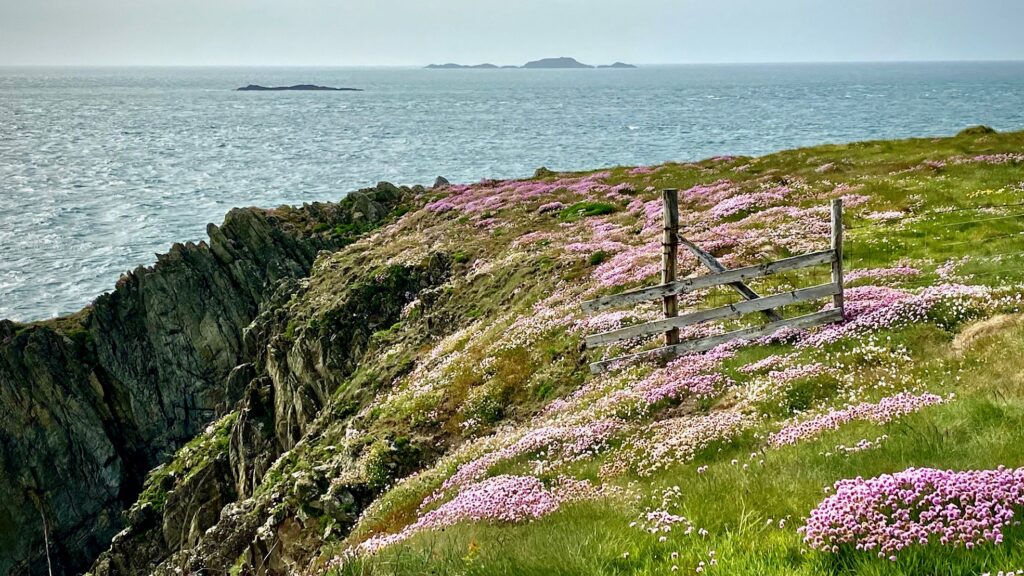
The heady mix of sea thrift (sea Pinks), Sea Campion, Red Campion, Birds foot trefoil, bluebells, violets, spring Squill, and walls of ox-eye daisies seem to decorate the path to distract the eye from the extraordinary seascapes. These beautiful indigenous plants mix with gorse (kept short by their hostile environment) to paint beautiful stripes of colour down the granite walls of the cliffs themselves and mix into the hedgerow with honeysuckle to assault the nose.
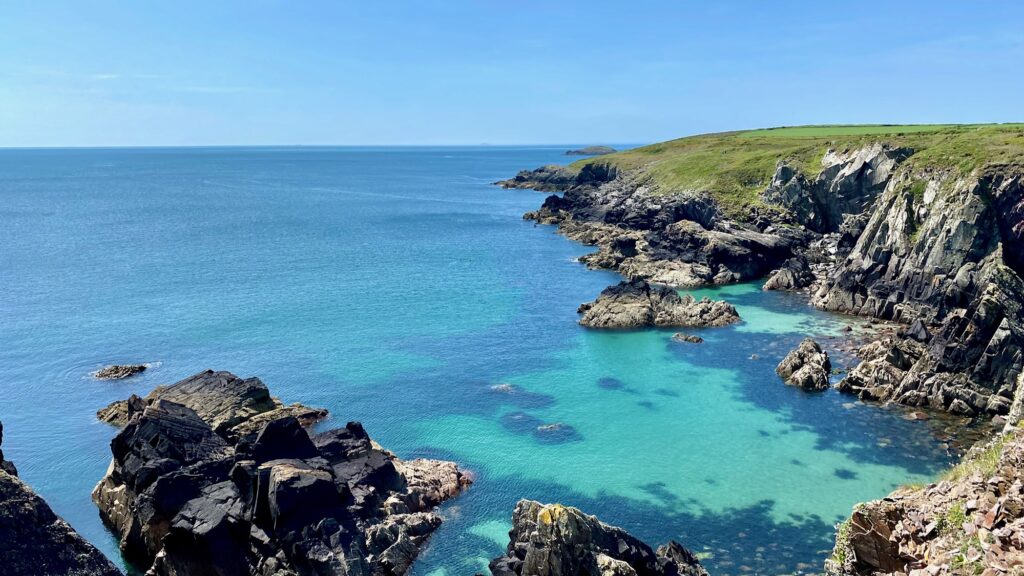
West Wales is made from a huge mix of different Geology. Here in St Brides Bay, we find mostly volcanic with microgranite and diorite. Here, exposed, their size and majesty are breathtaking.
Ramsey Island and Skomer Island
Spy Ramsey Island, and to the south Skomer Island. Both are accessible by boat trips and are famous for being bird sanctuaries. Skomer is world-renowned for its Puffins.
No trip to Pembrokeshire is complete without keeping an eye continually open towards the sea looking for seals. A canoe trip around the coastline is a wonderful way to spend a couple of hours. You may be surprised by an inquisitive Seal. Popping up next to you. Just to see what you are doing in his waters.
St. Davids
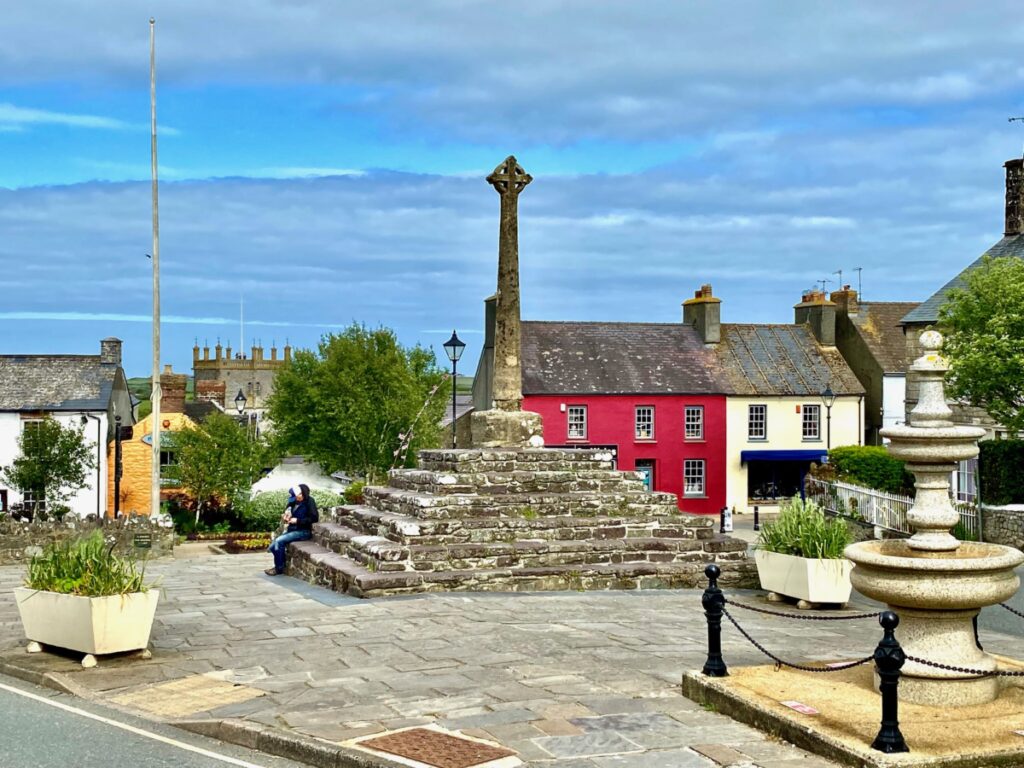
On our last day here we took a walk into St Davids. This little town qualified as a City due to its Cathedral. (The rules are now changed to include the bigger towns, without Cathedrals). A twenty-minute walk from the campsite. Lined with a Hedgerow full of tall grasses and cow parsley. Waving like festival flags in the stiff breeze which had arrived overnight.
At the edges of the city, we were greeted by odd road names, such as Goat Lane and Pigsfoot Lane. Plus a steady supply of artisan shops.
It was disappointing to note the amount of beautifully neat houses which were obviously investment properties for the holiday trade. The city was no less enjoyable for it. In fact, without the tourists, this city would have probably met the plight of so many of our smaller communities. The young leave the for the bright lights and career prospects of larger towns.
It did however seem that the hospitality trade was struggling somewhat to attract staff given the amount of ‘positions vacant’ posted on pretty blackboards outside establishments.
Shopping in St Davids
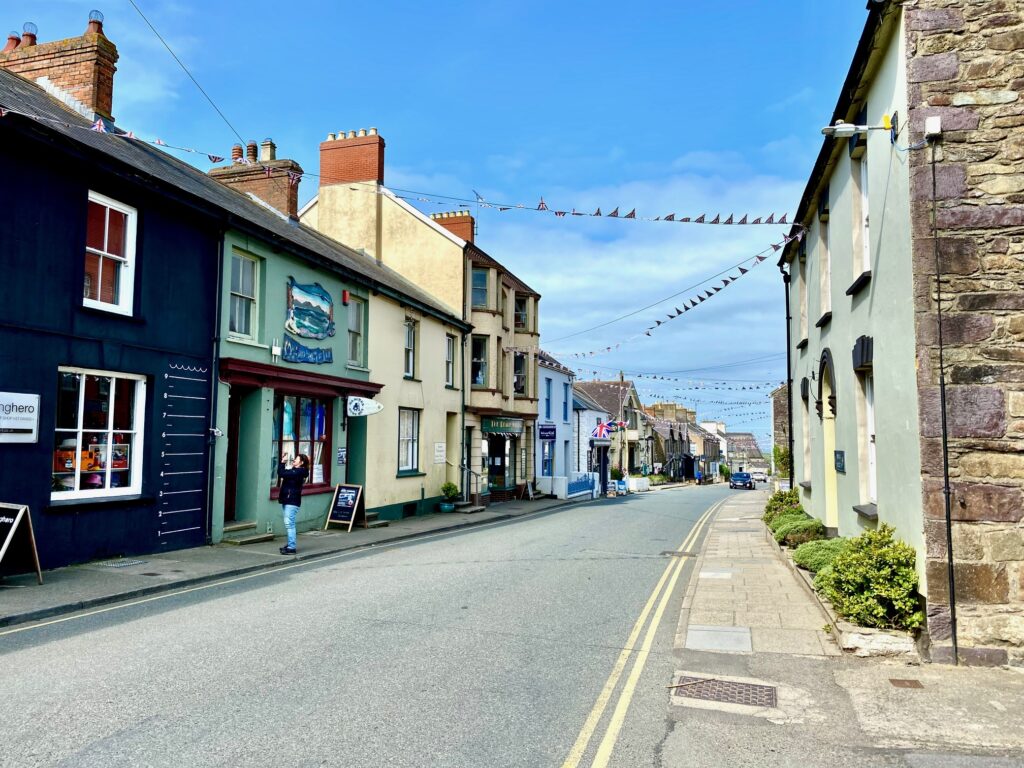
One of the great joys of Britishness is a National Trust shop. My favourite is in Boscastle, Cornwall, but St Davids also has a beautiful one. With one of the most friendly staff members I have met in years, he was keen to allay my fears over the lack of Bees on the coastal path by assuring me that there were plenty in his garden!
Additionally, he gave me a map of a new National Trust site in Newgate. Areas of the land there had been returned to wildflower meadows. Leaving me with a ‘marked up’ copy of the map, he encouraged me to visit Newgate and walk the routes on the map for myself.
I had almost managed to escape the shop when Carl arrived. The obligatory jar of National Trust Chutney was chosen. Later paired with Caerphilly cheese and Scottish oatcakes, from the local supermarket.
A Welsh Oggie?
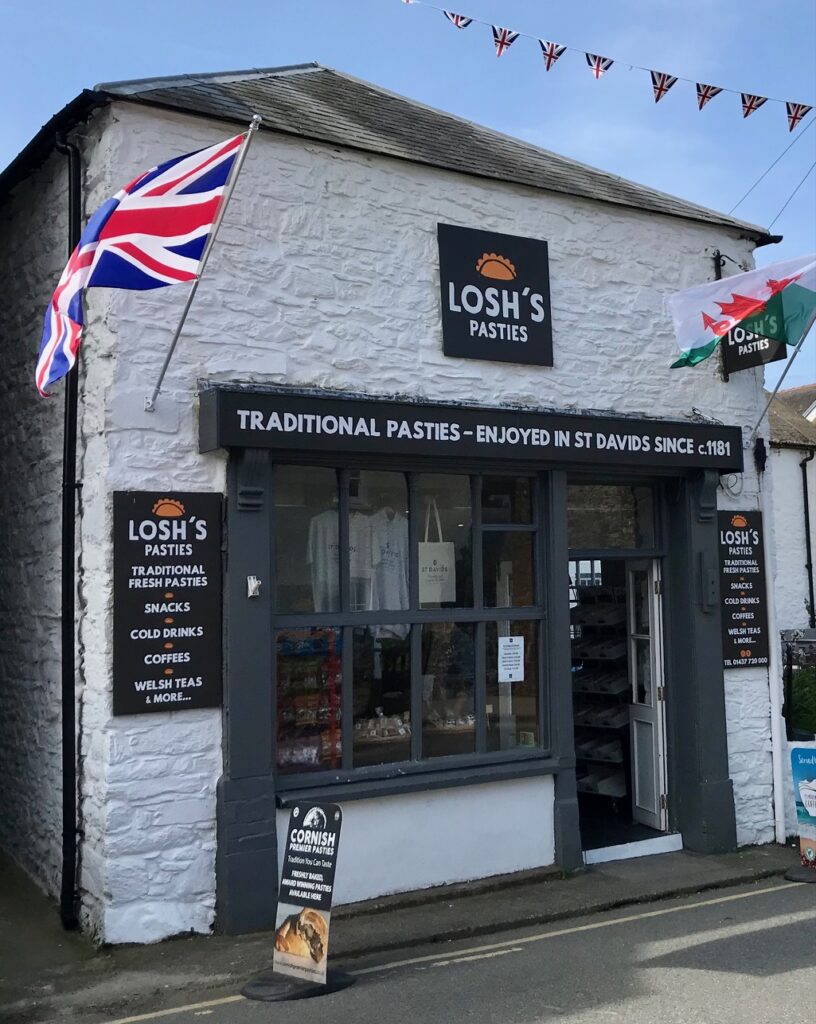
A Pasty Shop in the middle of the High Street, Losh’s, reminded me that it had already been a long morning and food was in order, but a Cornish Pasty Shop felt somewhat out of place. The Pasty itself has its roots as a traditional British baked pastry, with tradition placing it firmly in Cornwall, to the extent that it is now a protected Geographical indication (PGI) status holder, and accounts for around 6% of the food economy there.
The pasty is made by placing an uncooked filling (usually meat and vegetables) inside a shortcrust pastry circle. Folded and crimped and sealed before baking.
In Wales, as in Cornwall, it is forever linked to the food of Miners. A full meal which could be carried and eaten quickly, without the need for cutlery. Sometimes found as a two-part pasty with savoury in one end and Sweet in the other, but the Pasty term Oggie was one that I had been unaware of until had encountered it a number of times this weekend, so whilst Carl tucked into a traditional Cornish pasty, I felt duty bound to opt instead for the Welsh Lamb and Mint ‘Oggie’.
The Welsh Oggie
Oggie is a Welsh phrase used when the crust of a pasty was thrown over a shoulder. Traditionally met with the response ‘Oi’. A tradition which has made its way into a chant on Welsh sports terraces.
Originally a Tiddy Oggy reflected a poverty pasty. Meat being replaced with extra potato. This wasn’t what I found in my Oggie from Losh’s Pasties in the High Street in St Davids. This was definitely more like a Shepherd’s Pie with the potato topping replaced with a pasty holder. The sumptuous amount of gravy with Peas and Carrots, as well as minted lamb, confirmed this was not a mid-day snack, but a full-on lunch. Dinner would have to be rethought.
St Davids Cathedral Pembrokeshire: A Timeless Gem of Spirituality
‘A 12th-century pope had decreed that two trips to St Davids were equal to one to Rome – turning it into a centre of pilgrimage for the entire Western world. Thousands flocked to see the shrine of St David in the newly built cathedral. ‘
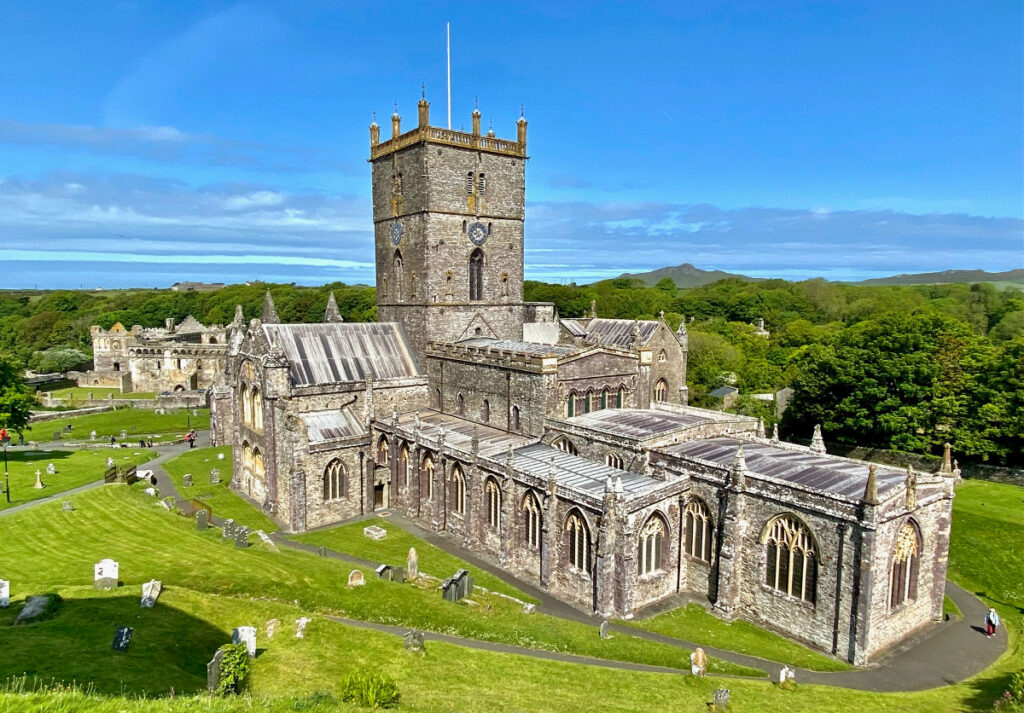
A wander around St Davids has to include a trip to the cathedral, it’s not chargeable but donations are most welcome.
Since the 6th century, there has been a church on this site. St Davids Cathedral holds a significant place in Welsh culture. It is not only the final resting place of Saint David, Wales’ patron saint but also a revered pilgrimage site.
Nestled in picturesque Pembrokeshire, St Davids Cathedral is a remarkable testament to architectural brilliance and spiritual devotion. With its rich history and majestic presence, this cathedral is a must-visit destination for history enthusiasts and those seeking spiritual solace.
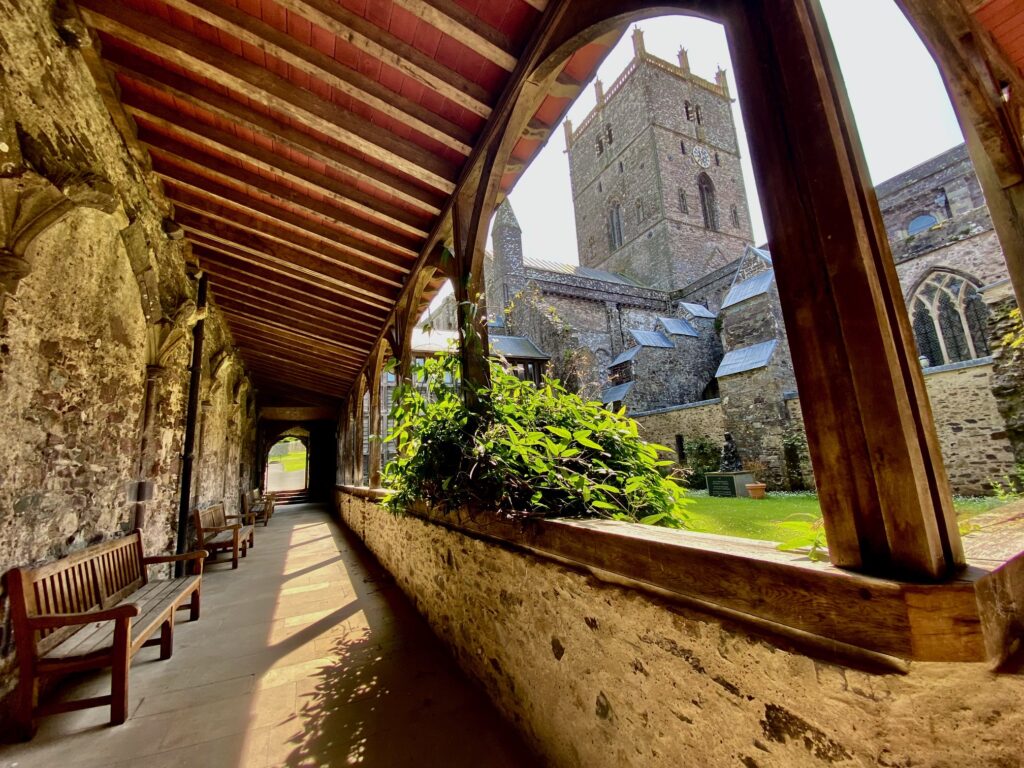
Within the cathedral’s hallowed halls, visitors are embraced by a sense of peace and serenity. Whether attending a service, lighting a candle, or simply reflecting in quiet contemplation, the spiritual essence of St Davids Cathedral touches the soul.
Preserving its rich heritage, St Davids Cathedral stands as a symbol of Wales’ cultural legacy. Through dedicated restoration projects and educational initiatives, this architectural masterpiece remains intact, ensuring its stories and traditions continue to inspire future generations.
The Bishops Palace St Davids
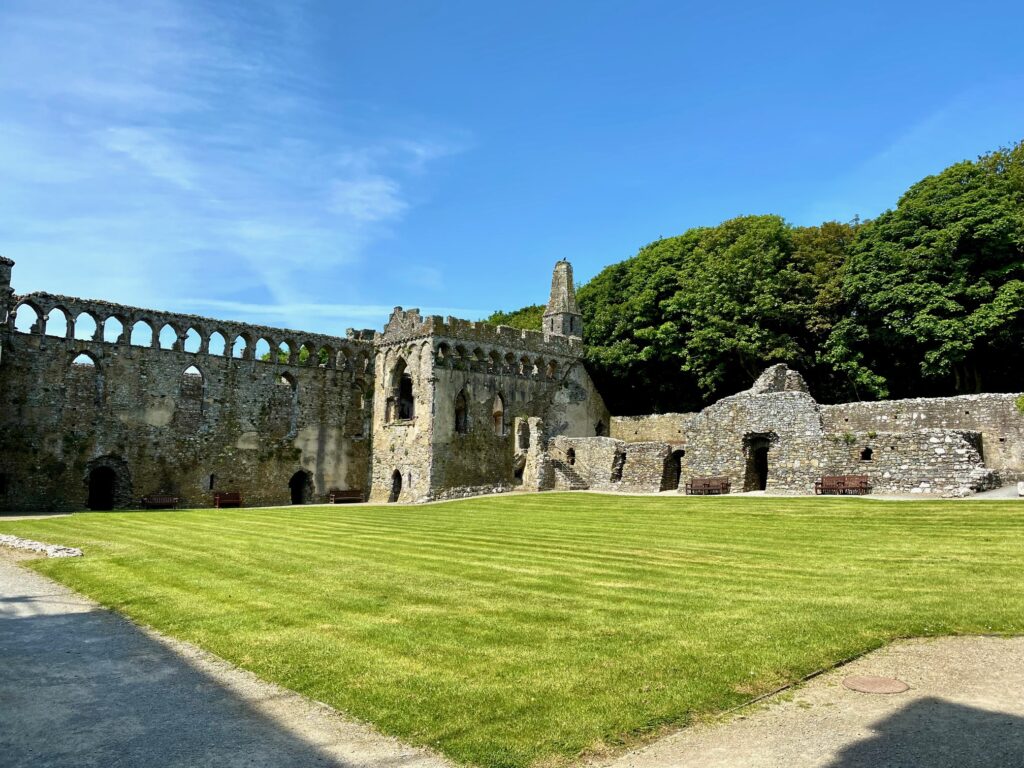
Between 1328 and 1347 Henry de Gowerhe turned a building only fit for ‘servants and animals’ into an immense palace for the Bishop of St Davids.
Next to the Cathedral are the Bishops Palace ruins (for which there is a £5 entry change). Reviews on social media platforms lead you to believe that it’s £5 well spent. We however are on a budget and are still suffering from ‘ruins’ apathy after our trip to Greece last year.
St Davids – Wales’ First Bee-Friendly City
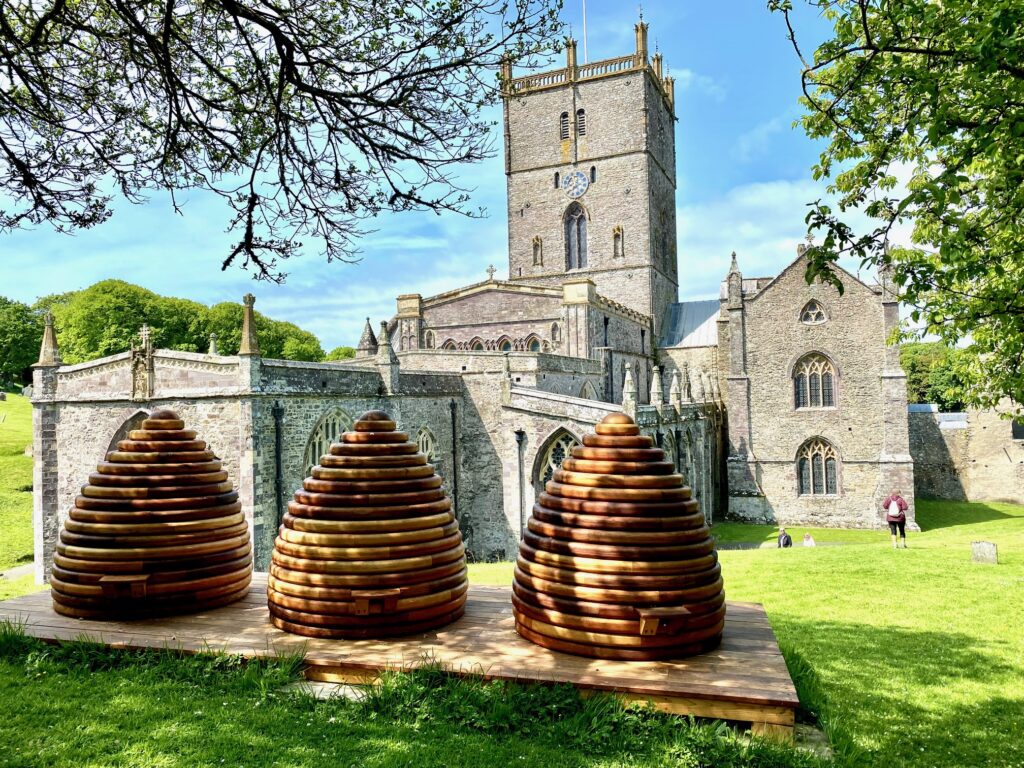
With all this talk of bees, it was most interesting to spy the Honey Bee hives at the cathedral. Three oversized Skeps (traditional bee hives) made from cedar wood. Installed on the Cathedral grounds in November 2022 as a living art installation. ‘Do the little things’, which were St David’s last words.
The projects twins Pembrokeshire to Ferns, County Wexford, Ireland. It reflects the story of St Aiden. Gifted a Hive of bees from St David, twice following St Aiden back to Ireland. (Necessitating them being brought back). The bees are cared for by local Beekeepers with the honey to be sold locally.
But Where are the Bees?
Whilst no one could deny the beauty of these wonderful wooden structures, the Price tag for the two-site project was £175,000 which seemed a little rich in our current time of austerity. We some time spent at the hives but did not see one single honey bee.
You would have thought with hives that large, and with warning signs about busy working bees that the place would be literally ‘buzzing’, perhaps we need to be a little more patient, with St Davids receiving the first city-wide accreditation in the Bee Friendly initiative, which encourages schools, businesses and communities to help combat the decline of insect pollinators, it may well be that in a year or two the result of all this effort will be more visible.
The result of all this Insect interest led me to ponder dropping into Dr Beynons Bug farm as we exit the county for home tomorrow. Unfortunately, tomorrow is Tuesday. The farm doesn’t reopen until Thursday. Perhaps a thought for another day. We will leave the area with a new love of St Davids, a new desire to travel less, see more on our doorstep and next time remember to bring the sun lotion!

